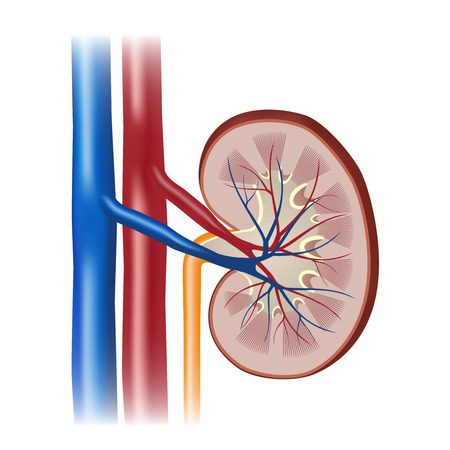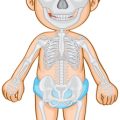Overview of Back and Spine Rehabilitation in the U.S.
Back and spine issues are some of the most common health problems affecting Americans today. Whether it’s lower back pain from sitting at a desk all day, injuries from sports or accidents, or chronic conditions like scoliosis and arthritis, millions of people in the United States deal with back and spine discomfort every year. Understanding these problems and how rehabilitation works is essential for developing effective care plans that can help people get back to their daily activities.
Common Causes of Back and Spine Issues
There are many reasons why someone might experience back or spine pain. Some of the most frequent causes include:
| Cause | Description |
|---|---|
| Poor Posture | Sitting or standing incorrectly for long periods puts extra stress on the back muscles and spine. |
| Injuries | Falls, car accidents, or sports injuries can cause sudden back or spine problems. |
| Aging | The natural wear and tear of aging can lead to conditions like degenerative disc disease or spinal stenosis. |
| Herniated Discs | Discs that slip out of place can press on nerves, causing pain and weakness. |
| Chronic Conditions | Arthritis and other long-term illnesses may affect spinal joints and tissues. |
Prevalence Among Americans
Back pain is incredibly common in the U.S. According to national health surveys, about 8 out of 10 Americans will experience back pain at some point in their lives. It’s one of the top reasons for missed work days and doctor’s visits. These issues don’t just affect older adults—people of all ages, including children and teens, can develop back or spine problems due to lifestyle habits, injuries, or medical conditions.
Statistics Snapshot
| Group | % Affected Annually |
|---|---|
| All Adults (18+) | ~80% |
| Workers (Missed Work Due to Back Pain) | ~30% |
| Youth/Teens (Reported Back Pain) | ~20% |
Main Goals of Rehabilitation in the U.S.
The primary goal of back and spine rehabilitation in America is to help people return to their normal routines as safely and quickly as possible. This process often involves a team approach, where doctors, physical therapists, occupational therapists, and sometimes psychologists work together. Here are some general goals seen in most rehab programs:
- Pain Management: Helping patients reduce or control pain using non-invasive methods whenever possible.
- Improved Mobility: Restoring movement so individuals can bend, twist, stand, and walk more comfortably.
- Functional Independence: Enabling patients to take care of themselves at home, at work, and in the community.
- Prevention: Teaching strategies to avoid future injuries through better posture, exercise, and ergonomics.
These goals set the foundation for integrating different therapies—including occupational therapy—into personalized back and spine rehabilitation plans that fit each person’s unique needs and lifestyle.
2. The Role of Occupational Therapy in Spinal Rehab
How Occupational Therapists Make a Difference
Occupational therapists (OTs) play a crucial role in back and spine rehabilitation by helping people regain their ability to perform daily activities and participate fully in life. They focus on restoring functional independence and improving overall quality of life for individuals who have experienced spinal injuries, chronic back pain, or surgery. OTs work closely with patients to address both physical and emotional challenges that come with back and spine conditions.
Key Ways OTs Support Recovery
| Area of Support | What OTs Do |
|---|---|
| Pain Management | Teach techniques to reduce pain during everyday tasks like dressing, bathing, or working at a desk. |
| Mobility Training | Help patients safely move in bed, stand up, walk, or use assistive devices such as walkers or canes. |
| Adaptive Strategies | Recommend adaptive equipment (like reachers or grab bars) and show how to use them to stay independent at home and work. |
| Posture & Ergonomics | Educate on correct posture and ergonomic setups for home and workplace to prevent further injury. |
| Energy Conservation | Guide patients on how to save energy throughout the day, so they can accomplish more without overexertion. |
| Mental Health Support | Address anxiety, depression, and stress related to spinal conditions through coping strategies and support. |
The OT Approach: Personalized and Holistic Care
No two people experience back or spine issues the same way. OTs begin with a thorough assessment of each person’s abilities, daily routines, home environment, and personal goals. They then develop customized plans tailored to what matters most to each individual—whether it’s returning to work, managing household responsibilities, playing with children, or enjoying hobbies again.
Collaboration with Other Professionals
Occupational therapists are part of an interdisciplinary team that may include physical therapists, physicians, nurses, and social workers. This collaborative approach ensures all aspects of recovery are addressed—from pain relief and mobility to emotional wellbeing and lifestyle adaptation—helping each person achieve the highest possible level of independence.
![]()
3. Collaboration with the Multidisciplinary Team
In the American healthcare system, team-based care is a cornerstone of successful rehabilitation, especially for individuals recovering from back and spine injuries. Occupational therapists (OTs) play an essential role in this process by working closely with physical therapists, physicians, nurses, case managers, and sometimes even social workers or psychologists. This collaborative approach ensures that each patient receives comprehensive and coordinated care tailored to their unique needs.
The Roles Within the Rehab Team
Each professional brings a different area of expertise to the table. The following table highlights how occupational therapists collaborate with other healthcare professionals in back and spine rehabilitation:
| Team Member | Main Role | Collaboration with OT |
|---|---|---|
| Physical Therapist (PT) | Focuses on improving movement, strength, and flexibility | OTs coordinate with PTs to ensure exercises support daily living activities and function at home or work |
| Physician (MD/DO) | Diagnoses conditions and oversees medical management | OTs provide functional assessments and progress updates for informed medical decisions |
| Nurse | Monitors health status and provides education on self-care | OTs share insights on adaptive equipment and techniques to improve patient independence |
| Case Manager/Social Worker | Assists with discharge planning and resource coordination | OTs communicate patient needs for home modifications or community resources |
The American Model of Team-Based Care in Action
In U.S. rehab settings—such as hospitals, outpatient clinics, or skilled nursing facilities—occupational therapists regularly participate in team meetings where all providers discuss patient goals and progress. These meetings help create unified treatment plans, reduce duplication of services, and allow quick adjustments based on real-life challenges patients encounter. For example, if a physical therapist notices a patient struggling with balance during walking exercises, an occupational therapist might suggest specific home safety modifications or recommend assistive devices that make daily tasks safer.
Benefits of Collaborative Care for Back and Spine Patients
- Holistic treatment: Patients get support for both physical recovery and everyday function.
- Streamlined communication: All providers stay updated on progress and adapt plans quickly.
- Personalized goals: OTs help set meaningful targets based on patients’ lifestyles and priorities.
- Smoother transitions: Collaboration eases moves from hospital to home or work environments.
An Example Scenario: Returning to Work After Injury
If someone is recovering from a back injury sustained at work, the OT works alongside the PT to address movement limitations while focusing on job-specific tasks such as lifting or sitting for long periods. Physicians monitor healing and adjust medications as needed. Case managers help coordinate workplace modifications or facilitate a phased return-to-work plan. This teamwork ensures the patient gets back to work safely and confidently.
4. Client-Centered Interventions and Everyday Life
When it comes to back and spine rehabilitation, occupational therapists (OTs) in the United States focus on helping clients get back to living their everyday lives as comfortably and independently as possible. The key is to create treatment plans that are personalized to each person’s unique needs, habits, and work situations. Here’s how OTs make a difference through client-centered interventions:
Adaptive Techniques for Daily Activities
OTs teach clients practical ways to manage their daily tasks while reducing strain on the back and spine. These adaptive techniques can include using long-handled tools for cleaning, learning safer ways to lift groceries, or practicing proper body mechanics when getting dressed. The goal is always to keep people active without making pain or injury worse.
Ergonomic Education at Home and Work
Many Americans spend hours at desks or do jobs that require physical labor. OTs provide ergonomic education tailored to these environments. This might involve adjusting chair height, organizing computer stations, or showing safer ways to move heavy objects at work. Here’s a simple table outlining some common ergonomic recommendations:
| Setting | Common Ergonomic Strategies |
|---|---|
| Office | Adjust chair and desk height, use lumbar support, take regular movement breaks |
| Home | Use step stools for reaching high shelves, set up kitchen tools within easy reach, practice safe lifting of laundry baskets |
| Manual Labor Jobs | Wear supportive belts, use carts for heavy loads, rotate tasks to avoid repetitive strain |
Tailored Strategies for American Lifestyles
The American lifestyle often includes driving, caring for children or pets, gardening, or engaging in recreational sports. OTs help clients modify these activities so they can still enjoy them without risking further injury. For example:
- Driving: Adjusting seat position for better back support and using cushions when needed.
- Childcare: Teaching safe lifting techniques for picking up kids and setting up changing stations at waist height.
- Gardening: Using kneeling pads and raised garden beds to reduce bending.
- Sports: Suggesting warm-up routines and teaching proper postures during play.
The OT Approach: Collaboration & Empowerment
A big part of occupational therapy is working alongside clients to understand what matters most in their daily lives. OTs listen carefully to each person’s goals—whether it’s returning to work, keeping up with family activities, or simply being able to move around the house more easily—and then design interventions that fit those goals. This collaborative process empowers clients with the skills and confidence they need for ongoing success outside the clinic.
5. Measuring Outcomes and Success in the U.S. Healthcare Setting
Tracking Therapeutic Progress in Occupational Therapy
In back and spine rehabilitation, it’s important to track each patient’s progress to ensure occupational therapy (OT) is effective and aligned with their goals. In the United States, therapists use a mix of tools and culturally relevant measures to capture how well patients are doing throughout their rehab journey.
Common Ways to Measure Progress
| Method | Description | Why It Matters in the U.S. |
|---|---|---|
| Patient-Reported Outcome Measures (PROMs) | Surveys where patients rate their pain, mobility, daily function, and satisfaction with care. | Gives a voice to the patient; meets expectations for patient-centered care. |
| Functional Assessments | Standardized tests like the Oswestry Disability Index or Functional Independence Measure (FIM). | Makes it easy to compare progress over time; used by insurance companies to justify ongoing therapy. |
| Therapist Observations | Notes from OT sessions about physical movement, posture, and activity participation. | Adds clinical judgment and context; helps tailor interventions for American lifestyles. |
| Cultural & Lifestyle Goals | Personal achievements such as returning to work, driving, or participating in community sports. | Reflects what success means for each person in their local context. |
Meeting Insurance Documentation Requirements
In the U.S., insurance coverage plays a big role in rehabilitation plans. Therapists must document goals, progress, and outcomes clearly using evidence-based metrics. Typical documentation includes:
- Initial evaluation: Baseline function and goals set with the patient.
- Treatment notes: Details on exercises, adaptive techniques, and response to therapy.
- Progress reports: Updates that use objective data and PROMs to show improvement or need for continued services.
- Discharge summary: Final outcomes and recommendations for home or workplace adaptations.
Culturally Relevant Indicators of Success
The American approach values independence and quality of life. Success is often measured by how well someone can return to meaningful activities—whether that’s getting back to work, caring for family, or enjoying hobbies. Therapists work closely with patients to define these goals at the start of rehab and revisit them during treatment. This ensures therapy is not just clinically effective but also personally meaningful within each patient’s cultural background and lifestyle in the U.S.


